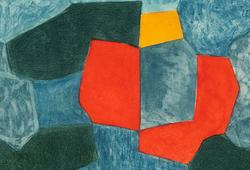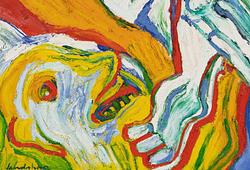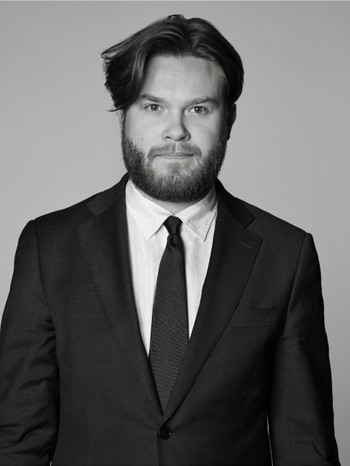Gustaf Theodor Wallén
Waiting for father, Vitemölle
Signed G.T. Wallén. Probably executed around 1886-87. Oil on canvas 100 x 150 cm.
Alkuperä - Provenienssi
By descent in the family.
Kirjallisuus
Urban Windahl: Gustaf Theodor Wallén, The Wallén Foundation, 1992, cf. similar motif "Eftermiddagsstämning, Vitemölle Skåne", 1886-87, illustrated p.21.
Muut tiedot
The painting in the auction is a version of Gustaf Theodor Wallén's painting "Eftermiddagsstämning, Vitemölle, Skåne," which is in the collections at Wallén-Hallen in Leksand. The painting from 1886-87 was awarded the Royal Medal of the Academy.
The motif is taken from the fishing village of Vitemölla on Österlen in Skåne. A solitary boy stands on the shore, bathed in warm afternoon light. There is almost a calm, and a Skagen-like shimmer has settled over the sea. A few boats are pulled up for the day, and the nets are hanging to dry. The boy gazes out towards the horizon, and the viewer's gaze follows his. In the Wallén-Hallen painting, the pier extends into the water, but in the version at this auction, the horizon is only broken by sails. Out there is a fishing boat coming in; is it that the boy has fixed his gaze upon? Wallén called the painting "Waiting for Father," but when the smaller version was submitted to the exhibition at the Academy, he changed the title to the more grandiose "Afternoon Mood."
The gold medal meant that Wallén was qualified to apply for the State Travel Scholarship, and now Paris became the obvious destination! He arrived there in October 1888 and enrolled at Académie Julian and Colarossi's studio. The lively Parisian scene attracted many artists, and Wallén was certainly no exception. He often sought out the quays along the Seine with its throngs of people, but it was not always easy to engage in plein air painting amidst this bustle.
In the summer of 1889, Wallén travelled to the coastal town of Concarneau in Finistère, Brittany. Here he had access to his favourite motifs, boats and water, and it is these subjects that dominate his paintings in the following years.
During the 20th century, Wallén came to reside and later live in Leksand. Under the influence of the flourishing national romanticism in the early years of the 1900s, an artist colony formed in Leksand, including Wallén, Emerik Stenberg, Ivar Nyberg, Anselm Schultzberg, J Ullman, Carl Johan Lind, and Gustaf Ankarcrona.
In 1914, Wallén began to build his own house, the high cottage at Åkerö, inspired by Ornässtugan and Zorn's building in Mora. He now focused on building his home, and from the 1920s onwards, he would produce few new paintings. Wallén's last exhibition opened in Gothenburg in December 1947. It included 59 paintings and around 30 drawings. Unfortunately, Wallén barely got to experience the interest in his art.
Gustaf Theodor Wallén passed away on January 15, 1948, at the age of 88.






















































